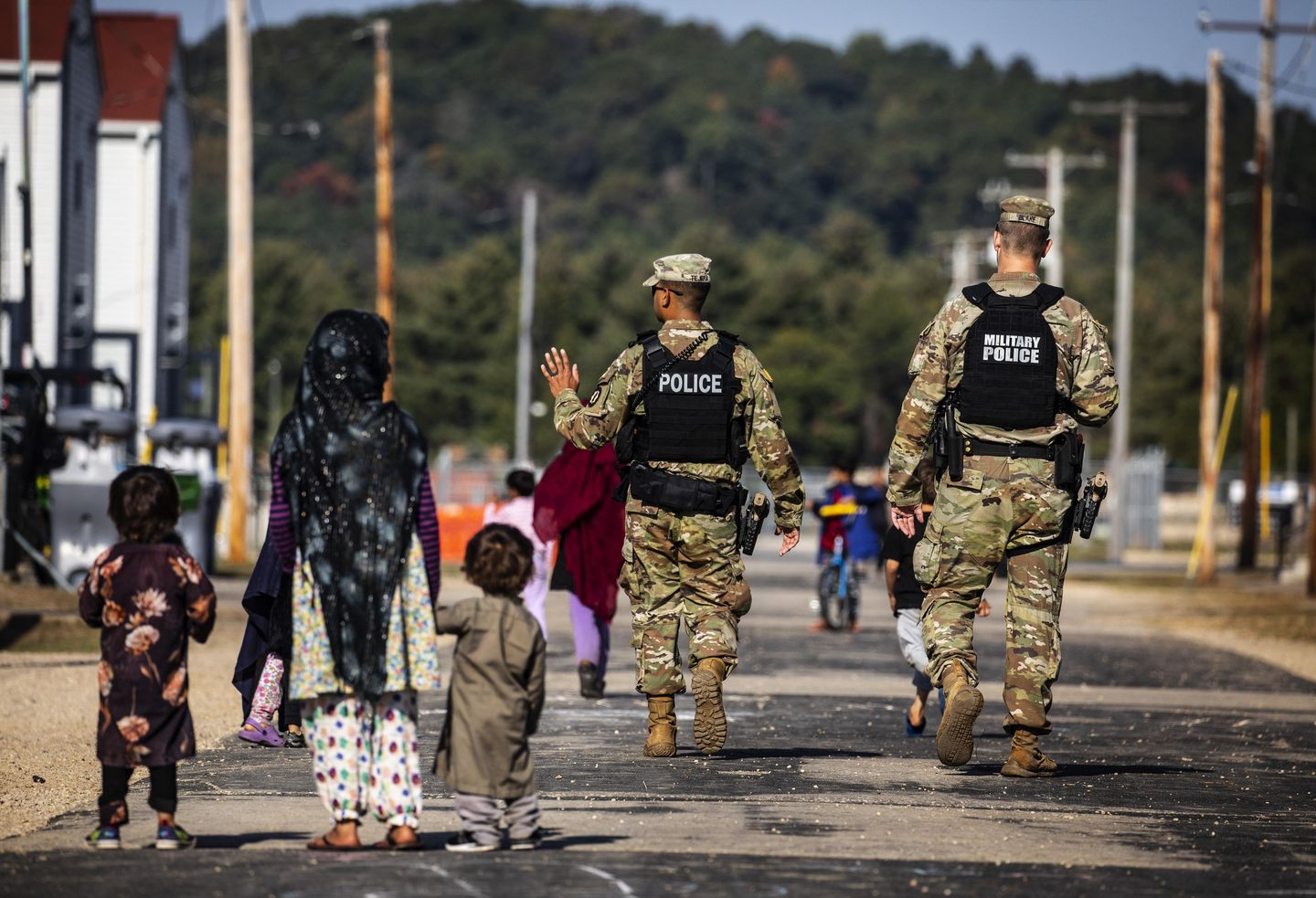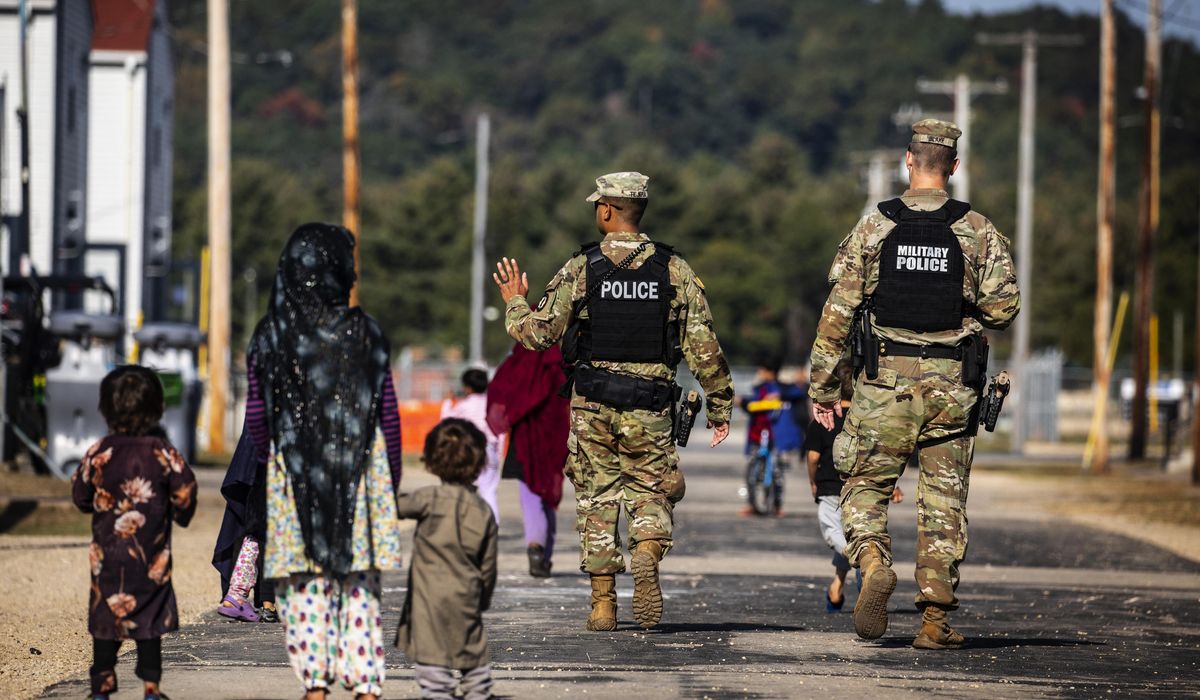

Nearly 10,000 Afghans brought out of their country during the U.S. airlift have been processed, released and resettled into the U.S. over the past two months, with some 53,000 still at military bases getting ready to be discharged.
As the Afghans begin to build new lives, more concrete details are emerging about who made it out of the country and who was left behind in the largest evacuation airlift in world history.
The number of U.S. citizens who weren’t evacuated soared in recent weeks as more people came forward to ask for help.
In congressional testimony last week, a top Defense Department official revealed that 216 Americans were looking to get out and another 243 had alerted the U.S. government that they intended to stay in Afghanistan. That was 76 more people than the administration announced days earlier and far more than the 100 or so that the State Department said were in Afghanistan in early September, after the airlift operation had ended.
The State Department said the rising number is a good sign because it means the U.S. has successfully transported Americans out of Afghanistan in the weeks after the Taliban resumed control.
Republican senators, though, labeled the situation a “hostage crisis” and demanded that President Biden do more to keep his promise to withdraw troops until every American was out.
A deputy secretary of state told Congress that, at the current pace, everyone who wants to leave Afghanistan will be able to “in the next couple of weeks.”
Even as the number of Americans left behind rises, questions are increasing about the 76,000 or so Afghans who evacuated on U.S.-orchestrated flights.
Government officials say about 3,000 are still at “lily pad” sites overseas awaiting more scrutiny or, in a small number of cases, have been deemed too risky to bring to the U.S. and are awaiting relocation elsewhere.
About 4,000 Afghan evacuees already had legal permanent resident status in the U.S.
That means the vast majority of Afghans were brought into the U.S. under Homeland Security Secretary Alejandro Mayorkas’ parole powers, short-circuiting checks that would have been performed overseas.
Of those, nearly half are expected to be eligible for the special visa available to Afghans who assisted the U.S. war effort, or their families. The rest will have to apply for other types of long-term legal status.
Some 53,000 Afghans are at military bases in eight states, and nearly 10,000 have been released and resettled into communities, government officials said.
The vetting process is also becoming clearer.
A senior Defense Department official told senators last week that evacuees were flown from Afghanistan to “lily pad” sites in other countries, where they were fingerprinted and had biographic information taken. That data was run through systems from the FBI, the National Counterterrorism Center and Customs and Border Protection to spot any serious criminal record or flags of potential terrorism.
Those with clean records were allowed to board planes to the U.S., while those flagged in the records check underwent face-to-face interviews.
That is a departure from the refugee or special visa process, which would have required an in-person interview for any applicant before reaching the U.S. The deviation has raised concerns among Republicans on Capitol Hill.
Biden officials said in-person inspections are conducted at the port of entry, where a CBP officer can recheck databases, ask questions, search belongings and require more intense secondary inspections.
Indeed, it was CBP officers who flagged two Afghan evacuees who were flown to the U.S. despite having major felony records and previous deportations.
That they were nabbed at the second check “shows our system is working,” said Emily Horne, a spokesperson for the National Security Council.
Sen. Josh Hawley, Missouri Republican, challenged the administration last week over the lack of overseas interviews for all Afghans.
“Joe Biden’s withdrawal from Afghanistan was an absolute disaster that left 13 American service members dead and hundreds of Americans and allies stranded behind enemy lines. Now we’re learning that there are major issues with the vetting of people we did manage to evacuate and bring to America,” Mr. Hawley said in a statement to The Washington Times. “Joe Biden and his administration need to be held accountable for their failures and they must provide answers on their vetting procedures.”
Homeland Security said the vetting is multilayered and aimed at protecting Americans.
“This process includes intelligence, law enforcement, and counterterrorism professionals reviewing fingerprints, photos, and biographic data for each Afghan national before they are cleared to travel to the United States,” the department said in a statement. “As with other arrivals at U.S. ports of entry, Afghan evacuees undergo a primary inspection when they arrive at a U.S. airport, and a secondary inspection is conducted as the circumstances require.”
Then there are Afghans who did assist the U.S. war effort but didn’t make it onto evacuation flights. Most lawmakers on Capitol Hill say they should be a priority.
Sen. Jim Risch, Idaho Republican, said senators were working on more than 16,000 cases of such people near the end of the operation and only about 110 were found to have been successfully evacuated. That suggests thousands were left behind with their lives in danger.
Brian McKeon, deputy secretary of state for management, said he understood the frustration but added that U.S. personnel had to be careful. He pointed to some flights out of Mazar-e-Sharif that were supposed to be carrying a few Americans and some Afghans.
Without Americans on the ground, it’s difficult to get a manifest. Stowaways were found after reaching Qatar, which created new challenges.
“We have an agreement with Qatar. If these planes come, these people are likely coming to the United States. We’re not going to leave them in Qatar,” Mr. McKeon told senators.
Officials declined to speak about the number of Afghans deemed too risky to bring to the U.S. and about the Afghans who reached the U.S. but were found to be deportable.
The Biden administration is not taking Afghans back to their country. Officials said they would try to find third countries to take them.
